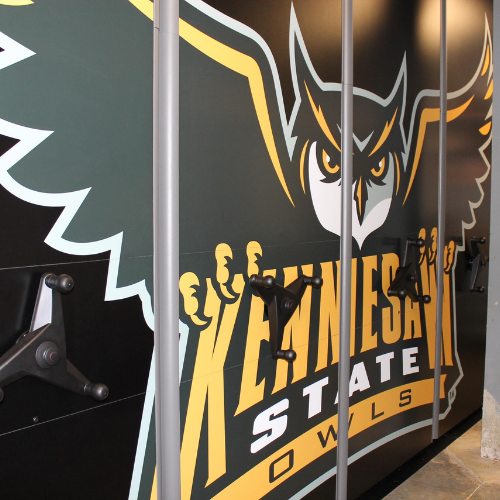Personal Device Storage for Students During High Stakes Testing
October 23, 2019
If you work in a public school that participates in state testing, then you’re likely familiar with the high level of security surrounding test materials and the challenge of personal device storage in testing areas. Teachers and administrators frequently struggle with managing students’ personal devices while they’re taking the test, as mobile phones, tablets, and electronics are strictly prohibited in the testing environment.
One approach has been to instruct students to leave their devices in their lockers; however, locker security is frequently called into question and devices ringing or sounding alerts from inside lockers can be incredibly disruptive to test-takers. Another approach has been for the test administrator to collect devices as students are entering the testing area and place them in a locked drawer or closet. The problem with this method is that students can pick up the wrong device at the end of the test session because all devices are stored together. In an effort to protect their own devices, students may also hide their devices somewhere on their person, thus compromising test security. No district wants to be called into question about test security if an auditor does a surprise site visit on testing day, so schools are looking for ways to remove any doubts and take student error out of the equation.
All of these issues have led some schools to explore new options for securely storing student devices during testing and beyond. One option is to provide individual storage for devices. Students can lock up devices and hold the keys, and the test administrator or classroom teacher can also hold a master key. Storage cabinets, lockers, and depots with individually-locking compartments are examples of this type of storage. This type of storage can also come with in-compartment device charging for added convenience, and it can be used routinely in any classroom where electronic devices are prohibited.
If you’re considering an individual device storage product for your school, you’ll first want to gather information about the type and number of devices you need to store and the space where you’ll be storing them. When you find a product that meets your needs, you’ll also want to try it before you buy it. Devices should easily load and unload from the individual compartments, locks should operate smoothly, and it should easily fit into your classroom or other space without being disruptive to movement.
Finding the right storage solution can give you, your teachers, and your students peace of mind during testing without the distraction of worrying about compromising security. To find the best solution for your school’s device storage needs, call a Datum device storage expert.
Click below to see all posts related to that topic
SHARE THIS

Talk to an expert.
RELATED POSTS
Athletic & Uniform Storage: Central York High School
The Client When Central York High School was left with very little space to store the gear and sports equipment for the athletic department, the school knew it needed to find a storage solution that would maximize the space. In addition, it was important for the area to provide the capacity required by the department…
Athletic Storage: Kennesaw State University
When Kennesaw State University decided to start a football program, they realized they needed help meeting the storage needs of the new program. The space dedicated to the program was cramped and had a steel support column in the room, making it difficult to plan out the necessary storage shelving and units needed to hold…
High-Density: Healthcare
Datum Storage Solutions provides quality, durable storage solutions to assist healthcare employees improve patient care by maximizing storage capacity and creating safe, efficient workspaces. Datum’s products are designed to meet the specific demands of healthcare facilities and offer the flexibility necessary to evolve and grow with storage needs, thus saving the time, money, and space…



